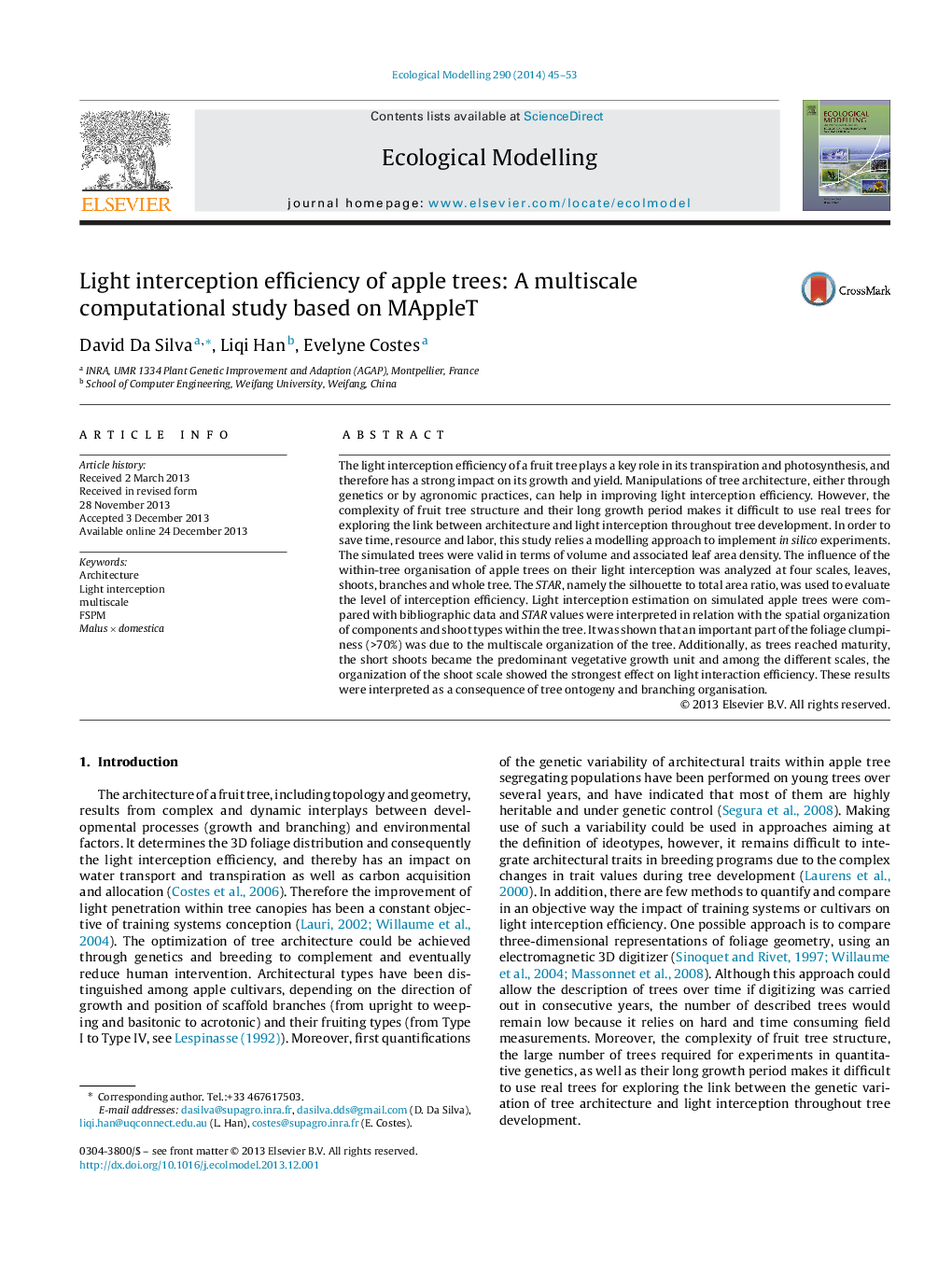| Article ID | Journal | Published Year | Pages | File Type |
|---|---|---|---|---|
| 4375841 | Ecological Modelling | 2014 | 9 Pages |
The light interception efficiency of a fruit tree plays a key role in its transpiration and photosynthesis, and therefore has a strong impact on its growth and yield. Manipulations of tree architecture, either through genetics or by agronomic practices, can help in improving light interception efficiency. However, the complexity of fruit tree structure and their long growth period makes it difficult to use real trees for exploring the link between architecture and light interception throughout tree development. In order to save time, resource and labor, this study relies a modelling approach to implement in silico experiments. The simulated trees were valid in terms of volume and associated leaf area density. The influence of the within-tree organisation of apple trees on their light interception was analyzed at four scales, leaves, shoots, branches and whole tree. The STAR, namely the silhouette to total area ratio, was used to evaluate the level of interception efficiency. Light interception estimation on simulated apple trees were compared with bibliographic data and STAR values were interpreted in relation with the spatial organization of components and shoot types within the tree. It was shown that an important part of the foliage clumpiness (>70%) was due to the multiscale organization of the tree. Additionally, as trees reached maturity, the short shoots became the predominant vegetative growth unit and among the different scales, the organization of the shoot scale showed the strongest effect on light interaction efficiency. These results were interpreted as a consequence of tree ontogeny and branching organisation.
